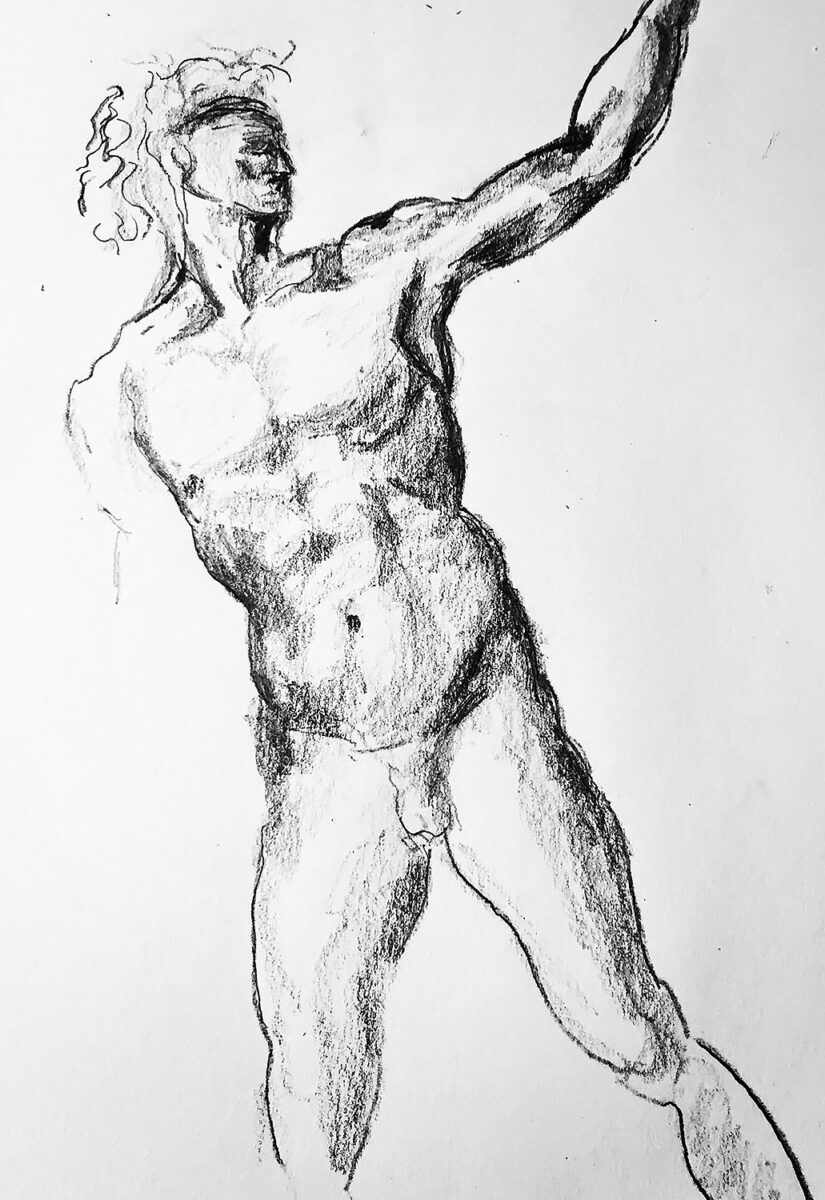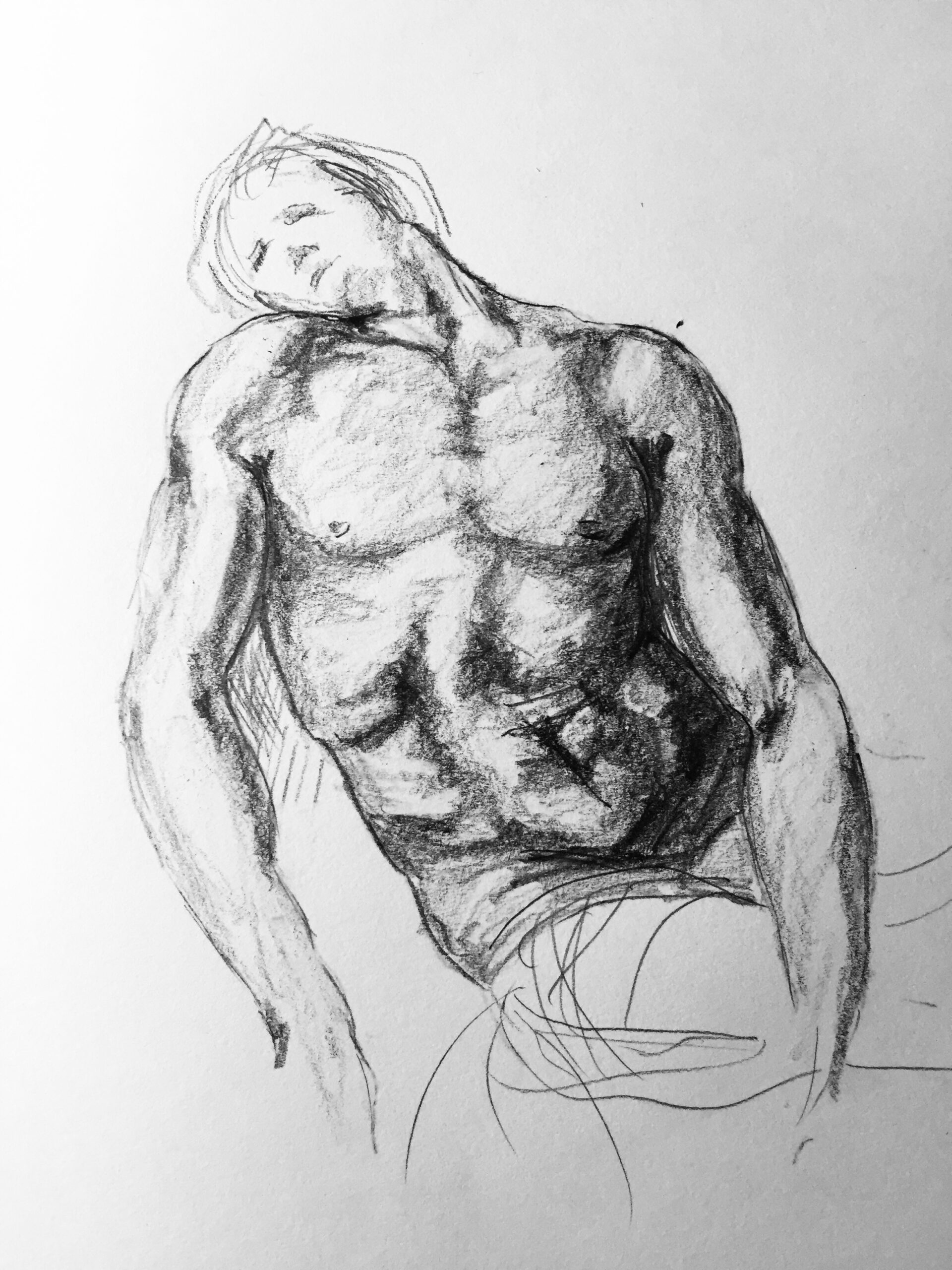
Graphite pencil figure drawing after Michelangelo Buonaratti. The original drawing is described as “A nude young man, to front, looking to right, beckoning”. The sketch by Michelangelo can be found at The British Museum. Once again I must emphasize that it is from THE British Museum and not just any run of the mill British Museum. For example the Dog Collar Museum in North Yorkshire. You know the one in Leeds Castle. Moving on, although I drew my copy in pencil, the original was done in pen and not one but two shades of brown ink. Both shades of brown ink are known as iron gall ink. When I say ‘known’. I mean ‘known’ by people other than me. So I had to research it.
“Iron salt is salt with iron in it.”
Are you ready for some fancy book learning? Iron gall ink is made from iron salts and tannic acids. Iron salt is salt with iron in it. That should help clear things up. The tannic acid came from vegetables. Iron Gall ink was used in Europe from the 400s and is still being used today. It can be found on Amazon as well as various pen supply stores. It cannot be found at Michaels Craft Stores or Hobby Lobby “home of oily paint and signs with religious expressions”. If your the handy type, there is a recipe to make your own at instructables.com
So now I should write something about Michelangelo. From what I understand he would often destroy his drawings so people wouldn’t know how he developed his figures. According to artist and biographer, Giorgio Vasari said that Michelangelo burned his drawings “so that no one should see the labors he endured and the ways he tested his genius, and lest he should appear less than perfect.” Out of the thousands he made there are only a few hundred still with us today.

